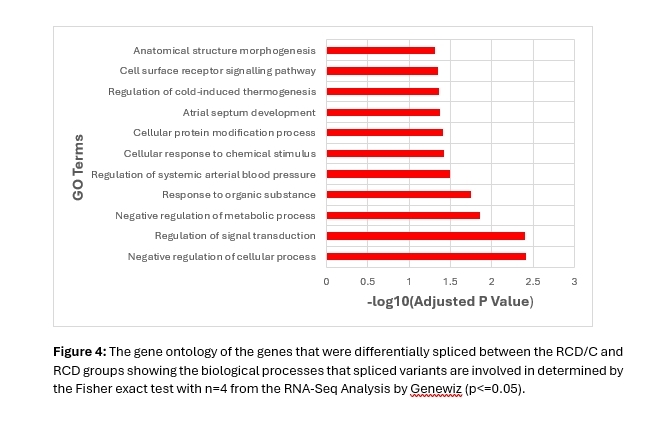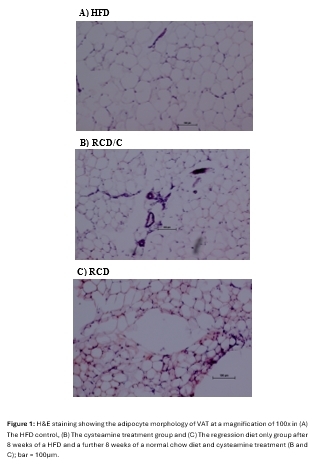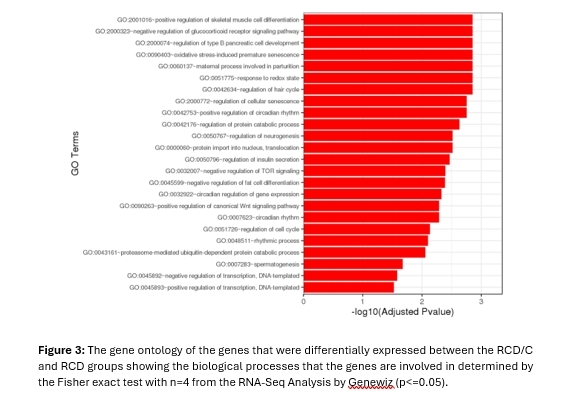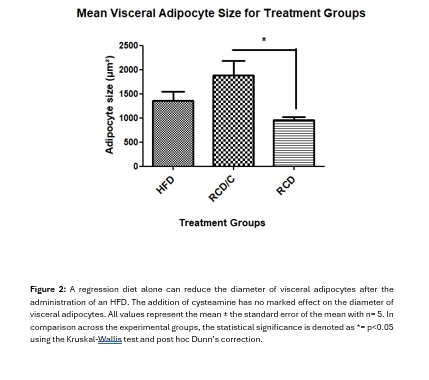Obesity contributes to the pathological remodelling of adipose tissue due to accommodating the caloric imbalance. Obesity can lead to several associated risk factors such as elevated cholesterol (specifically low-density lipoproteins (LDLs)) which can result in an increased risk of cardiovascular disease. However, the administration of anti-oxidizing agents and switching to a balanced diet have been shown to ameliorate the pathological effects of obesity on adipose tissue. For example, cysteamine has been previously shown to reduce the size of atherosclerotic lesions in the aorta in an LDL receptor knockout (Ldlr-/-) model fed a high-fat diet (HFD) as well as inhibit the oxidation of LDLs by iron at optimal lysosomal pH (4.5). (Wen et al., 2019).
Therefore, this study explored whether cysteamine can enhance the benefits of switching from a high-fat diet (HFD) to a balanced chow diet. This was done by investigating the extent of the remodelling of visceral adipose tissue (VAT) in an LDL receptor knockout model fed an HFD.
Nine-week-old female Ldlr-/- mice were separated into an HFD group, a regular chow diet-only (RCD) group, and a regular chow diet + cysteamine (RCD/C) group. The VAT cellularity was studied using haematoxylin and eosin staining. The extent of VAT fibrosis and VAT oxidative stress were measured using picro sirius red and dihydroethidium staining respectively. Lastly, the gene expression in the VAT was studied using RNA-Seq Analysis. All procedures complied with the Animals (Scientific Procedures) Act 1986 and were approved by the Ethical Review Process Committee of the University of Reading.
The VAT cellularity analysis showed that switching to a balanced chow diet alone resulted in a significant decrease in the adipocyte diameter of the VAT (960.36 ± 62.45µm; n=5) in comparison to the RCD/C group (1889.49 ± 298.20µm; n=5). This implies the possible inhibition of lipolysis by cysteamine because the VAT larger adipocytes were a similar size to the HFD control group (1363.19 ± 179.40µm; n=5). Markers of both fibrosis and oxidative stress showed no marked difference in any of the treatment groups suggesting cysteamine did not affect the VAT phenotype in terms of fibrosis and oxidative stress.
The gene ontology (GO) enrichment analysis highlighted GO terms associated with glucose homeostasis and the negative regulation of cell growth/signalling in the sole downregulated gene between the RCD group and the RCD/C group (Bmal1). The GO enrichment analysis for the differentially spliced genes also revealed GO terms associated with cell growth/signalling such as “anatomical structure morphogenesis” between the RCD group and the RCD/C group. Additionally, the GO term “regulation of cold-induced thermogenesis” was also enriched during the analysis that is specific to adipose tissue function. This possibly corroborates the inhibition of the reduction in the VAT adipocyte diameter with cysteamine treatment due to the role of thermogenesis in the lipolysis of white adipose tissue.
Overall, this suggests that cysteamine can influence adipocyte remodelling during the switch from an HFD to an RCD by preventing the lipolysis of the VAT lipid stores required for lipid homeostasis under normal conditions and obesity.




